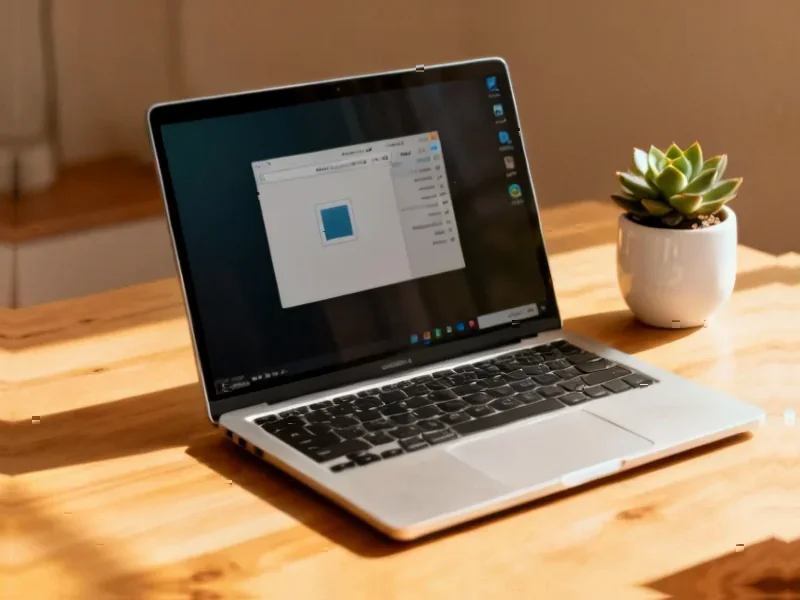According to PCWorld, Linux has surpassed 3% market share on Steam’s October 2025 hardware survey, representing a significant milestone for the platform in PC gaming. SteamOS Holo, the operating system powering Valve’s Steam Deck and Lenovo’s Legion Go S, dominates the Linux segment with 27.18% of Linux users, translating to approximately 1 in every 125 Steam users accessing the service through a Steam Deck. The data reveals that Linux gained 0.37% of total Steam users from September to October, while Windows lost 0.56% during the same period, suggesting migration between platforms. Popular distributions like Arch and Mint command significant portions of the Linux gaming market at 10.24% and 9.21% respectively, while nearly 20% of Linux gamers use distributions with too few users to chart individually. This breakthrough moment warrants deeper examination of what it means for the gaming ecosystem.
The Valve Multiplier: Beyond Hardware Sales
While the Steam Deck’s success is undeniable, Valve’s true achievement lies in creating a complete ecosystem that makes Linux gaming viable for mainstream audiences. The company’s investment in Proton compatibility layer represents the real infrastructure play here—it’s not just about selling hardware but creating an environment where Windows games can run seamlessly on Linux. This strategic approach mirrors Microsoft’s playbook with DirectX in the 1990s, where creating developer-friendly APIs ultimately locked in platform dominance. Valve’s genius lies in recognizing that hardware sales alone wouldn’t move the needle; the software compatibility layer was the essential ingredient that made the Steam Deck more than just another gaming gadget.
The Developer’s Cross-Platform Conundrum
For game developers, this 3% milestone creates both opportunity and complexity. The threshold represents a meaningful enough market share that ignoring Linux compatibility now carries measurable revenue consequences. We’re likely to see more studios following the lead of companies like EA and Activision in ensuring their titles run smoothly on Proton, even if native Linux ports remain rare. However, the fragmentation within the Linux ecosystem—with SteamOS Holo at 27%, Arch at 10%, and numerous smaller distributions—creates testing challenges that don’t exist in the relatively homogeneous Windows environment. Developers must now consider whether to optimize for the Steam Deck experience specifically or attempt broader Linux compatibility, each approach carrying different development overhead and support costs.
Microsoft’s Unforced Errors
The timing of Linux’s ascent coincides perfectly with Microsoft’s missteps in the PC gaming space. The end of full support for Windows 10, combined with widespread resistance to Windows 11’s hardware requirements and interface changes, has created the perfect storm for platform migration. Microsoft’s decade-long focus on enterprise and subscription services has left PC gaming feeling like an afterthought rather than a priority. When you combine this with Valve’s aggressive pricing and the Steam Deck’s excellent out-of-box experience, the value proposition for budget-conscious gamers becomes compelling. The 0.56% Windows user loss in a single month might seem small, but in the context of Steam’s massive user base, it represents hundreds of thousands of disillusioned customers actively choosing alternatives.
The Untapped Hardware Market
The most immediate opportunity lies with hardware manufacturers beyond Valve. The success of SteamOS Holo on the Steam Deck and Lenovo Legion Go S demonstrates there’s appetite for gaming-first operating systems that aren’t Windows. Companies like ASUS with their ROG lineup and MSI could capitalize on this trend by offering SteamOS or Linux-based alternatives on their gaming laptops and desktops. The “gaming laptop with SteamOS pre-installed” that the PCWorld author wishes for isn’t just a pipe dream—it’s a legitimate market gap that could differentiate manufacturers in an increasingly competitive space. The success of Bazzite as an open-source alternative also suggests there’s room for multiple approaches to Linux gaming environments beyond Valve’s walled garden.
Beyond the 3%: What Comes Next
This milestone represents more than just a number—it’s validation that alternative gaming platforms can achieve meaningful market presence. The next critical threshold will be 5%, a point at which Linux gaming becomes impossible for any major publisher to ignore. However, significant challenges remain. The fragmented nature of Linux distributions creates support complexities, and the reliance on compatibility layers rather than native ports means performance overhead and potential compatibility issues. The real test will come when a major AAA title launches with day-one Linux optimization, potentially triggering a cascade of publisher support. Until then, Linux gaming’s growth will likely remain steady rather than explosive, but the foundation Valve has built ensures this isn’t just a temporary spike but a permanent shift in the gaming landscape.




